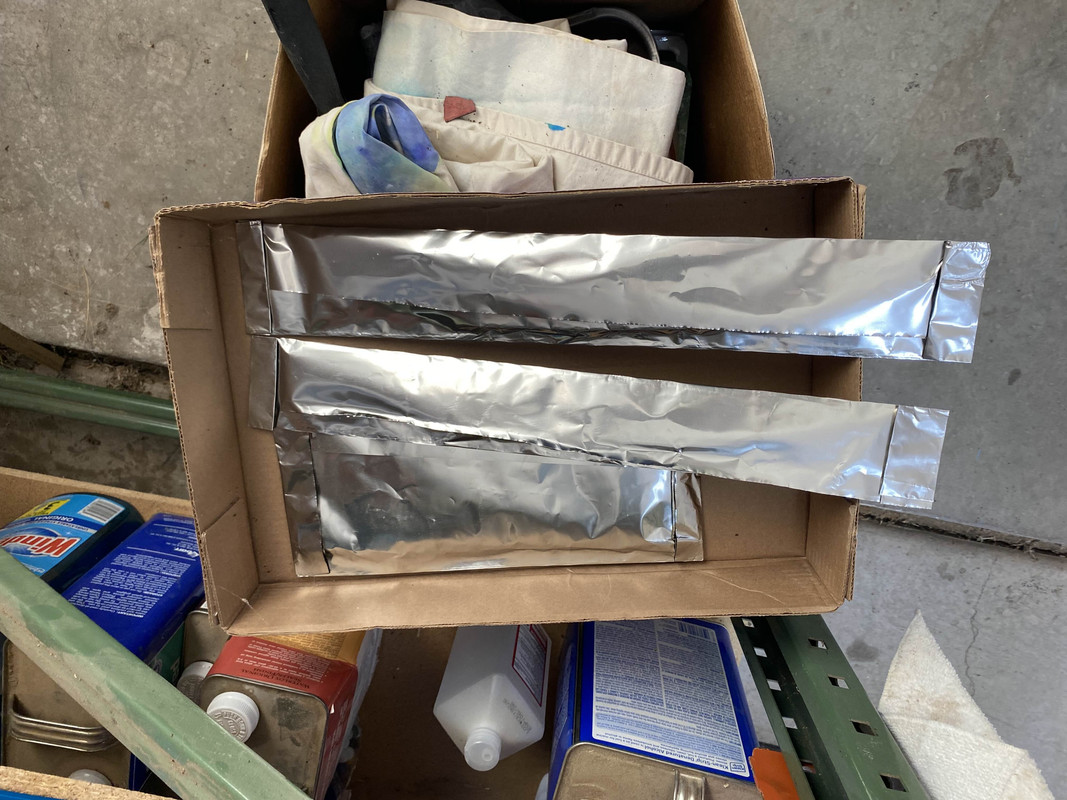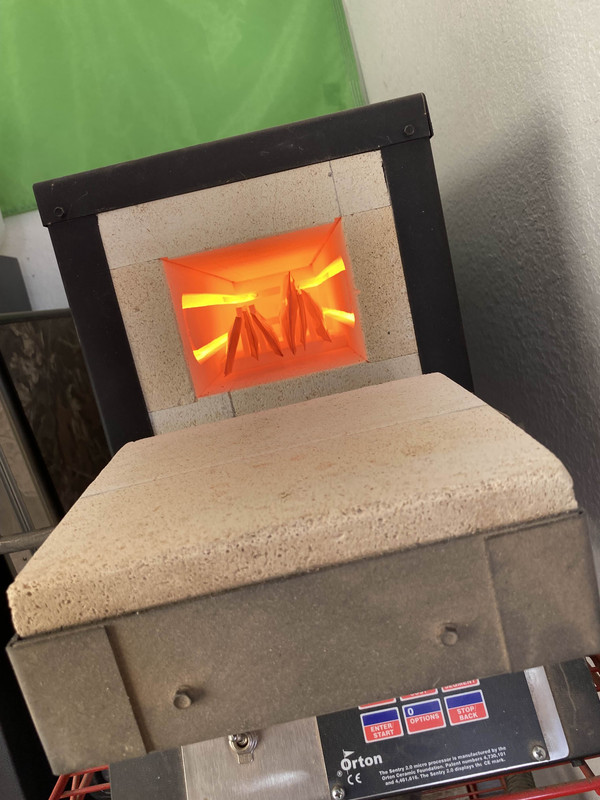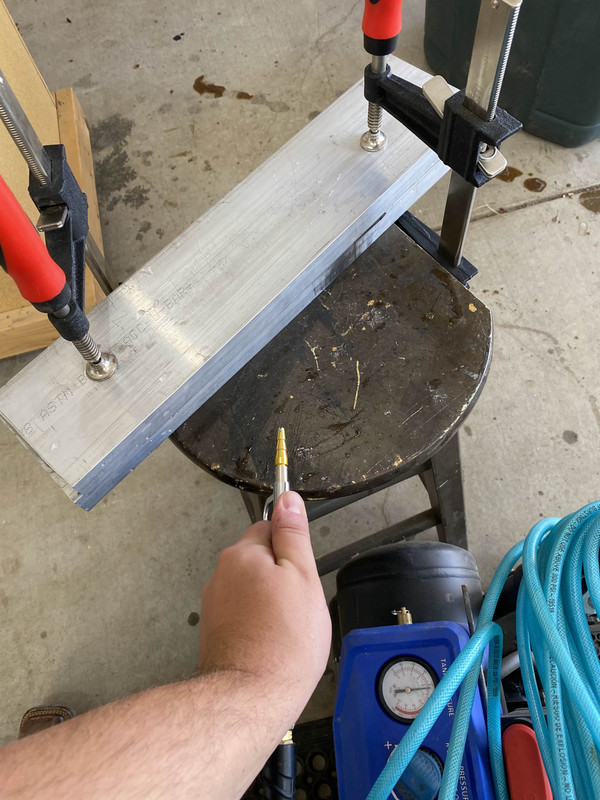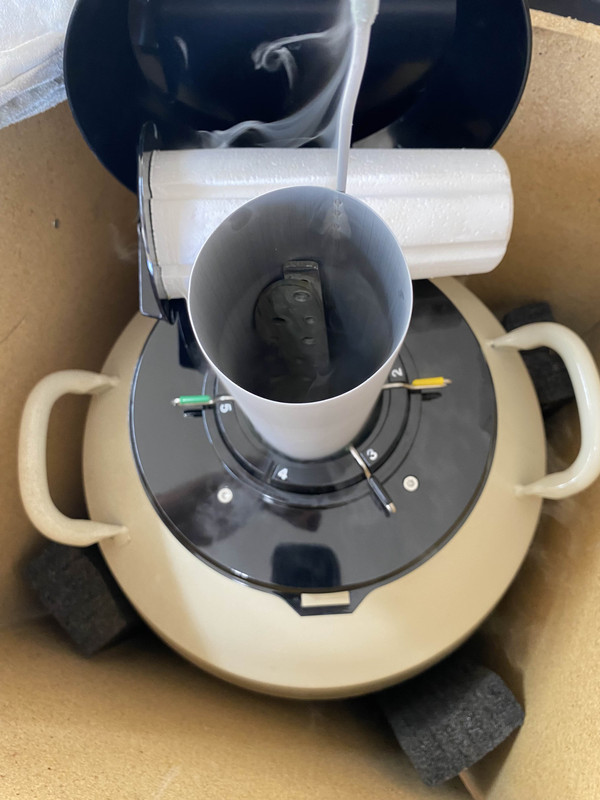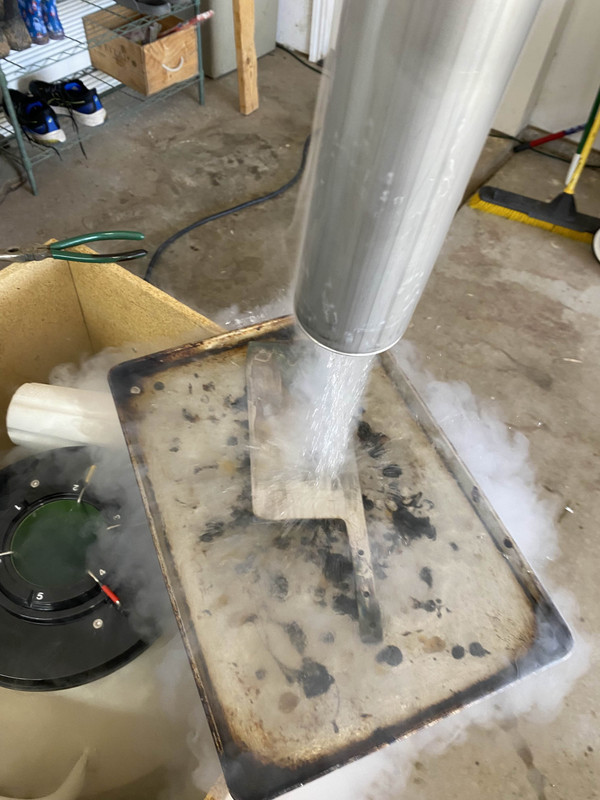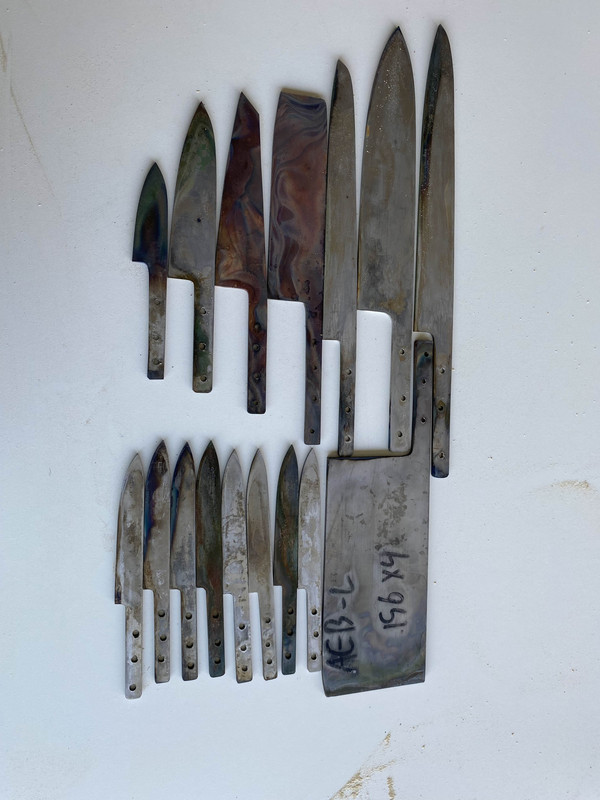Hey guys, I haven't posted in a while. Went off to veterinary school and had 2 kids since then. Finally getting settled back in where I can work on some knives again (have done a couple here and there since then).
I've been planning a kitchen set for a long while and figured now was a good time to start. I figured I'd post a WIP of it as I go along. It won't be done anytime soon most likely, but slow and steady it'll get there.
The set I'm planning is a 240mm Gyuto, 270mm Sujihiki, 230mm Bread, 205mm Bone Cleaver, 165mm Nakiri, 150mm Honesuki, 125mm Petty, 75mm Parer, and 8 - 115mm Steak. All will have octagonal wa handles.
I always make a plexiglass blank first after I draw out the knives of any style, that way I can always go back and make another if someone likes it, or I like one someone requests.
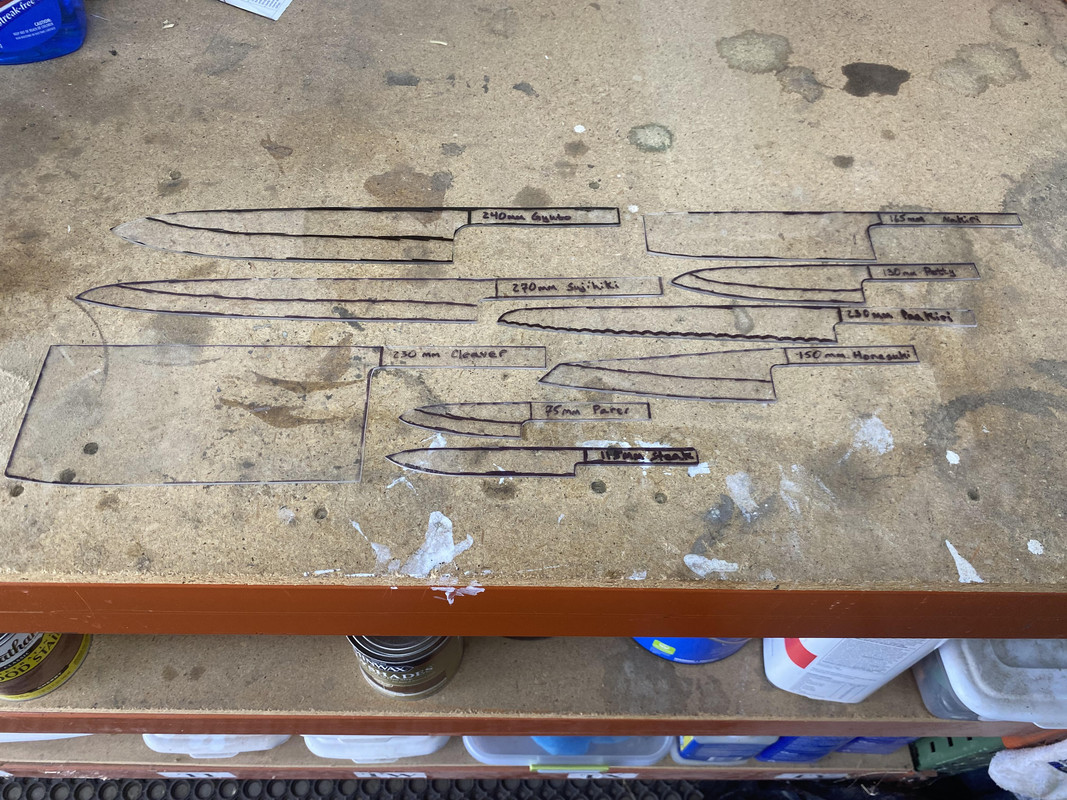
I'm using AEB-L for this set. I bought pieces from NJSB and USAKM for these. Dykem layout fluid and scribed profile. Rough cut the pieces out except the steak knives.
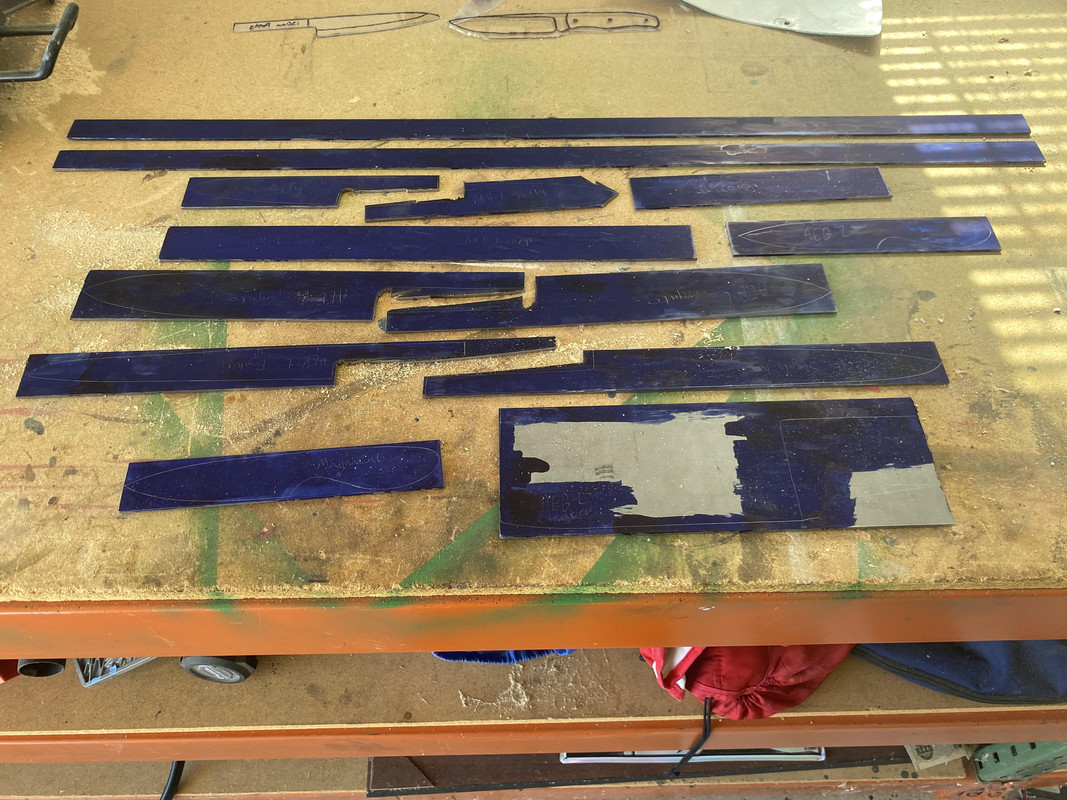
Cut closer to scribe lines on portaband and got the steak knives separated. 2 I had previously made with a different batch, so they have already been heat treated.
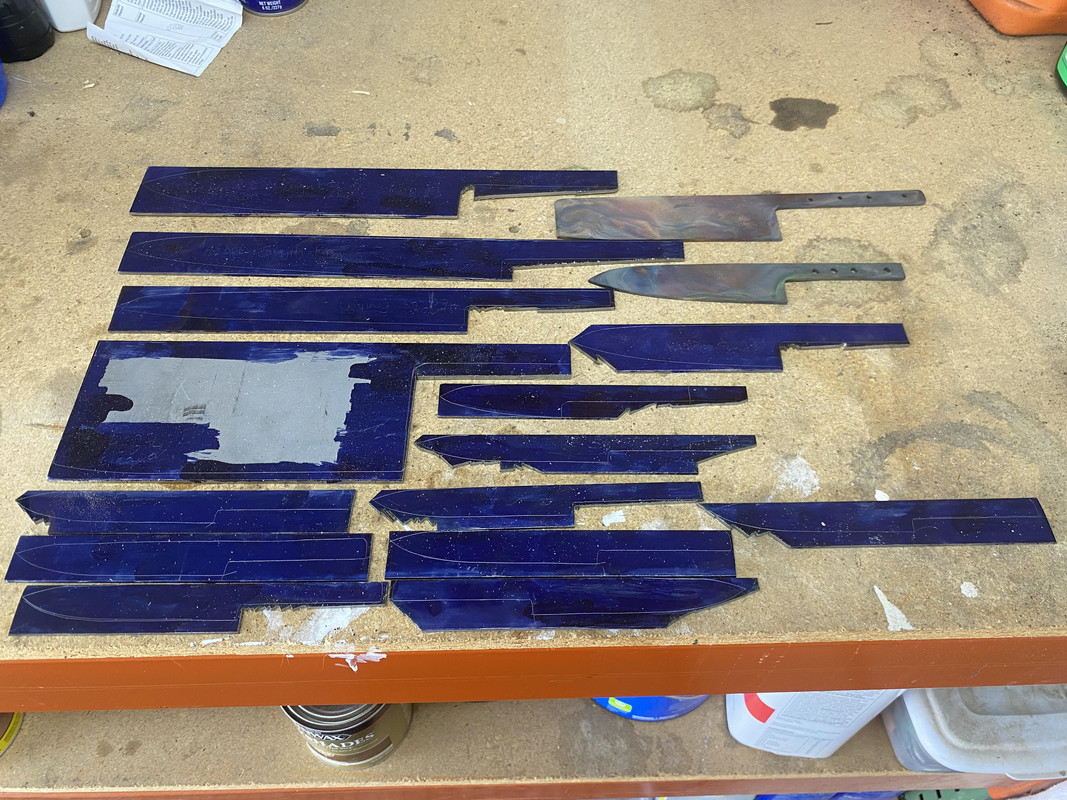
Profiled with a 36grit cubitron belt. Also drilled a few holes in the tangs. I do my handles with epoxy, not burned it, so it gives some extra hold for the epoxy (I use G-flex).
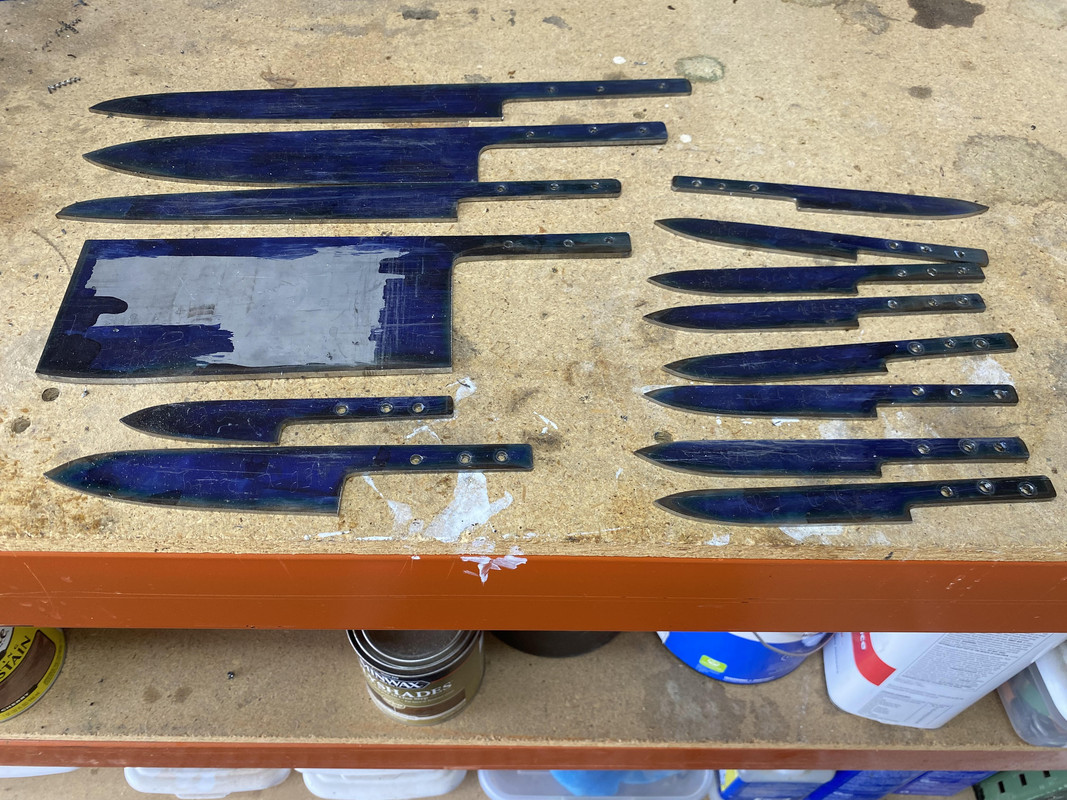
I will do bevels post heat treat, so next step is getting some LN then I'm ready to heat treat.
I'll try to get more action shots. I did most of these when I was home alone, so nobody to take the picture while I was working.
I've been planning a kitchen set for a long while and figured now was a good time to start. I figured I'd post a WIP of it as I go along. It won't be done anytime soon most likely, but slow and steady it'll get there.
The set I'm planning is a 240mm Gyuto, 270mm Sujihiki, 230mm Bread, 205mm Bone Cleaver, 165mm Nakiri, 150mm Honesuki, 125mm Petty, 75mm Parer, and 8 - 115mm Steak. All will have octagonal wa handles.
I always make a plexiglass blank first after I draw out the knives of any style, that way I can always go back and make another if someone likes it, or I like one someone requests.

I'm using AEB-L for this set. I bought pieces from NJSB and USAKM for these. Dykem layout fluid and scribed profile. Rough cut the pieces out except the steak knives.

Cut closer to scribe lines on portaband and got the steak knives separated. 2 I had previously made with a different batch, so they have already been heat treated.

Profiled with a 36grit cubitron belt. Also drilled a few holes in the tangs. I do my handles with epoxy, not burned it, so it gives some extra hold for the epoxy (I use G-flex).

I will do bevels post heat treat, so next step is getting some LN then I'm ready to heat treat.
I'll try to get more action shots. I did most of these when I was home alone, so nobody to take the picture while I was working.
Last edited:

